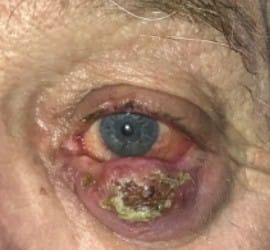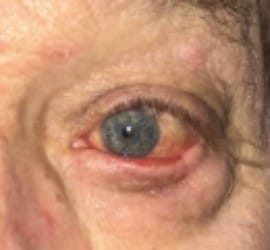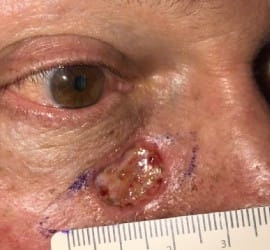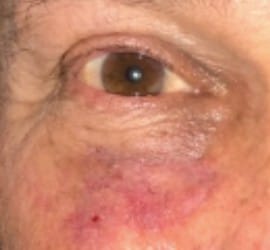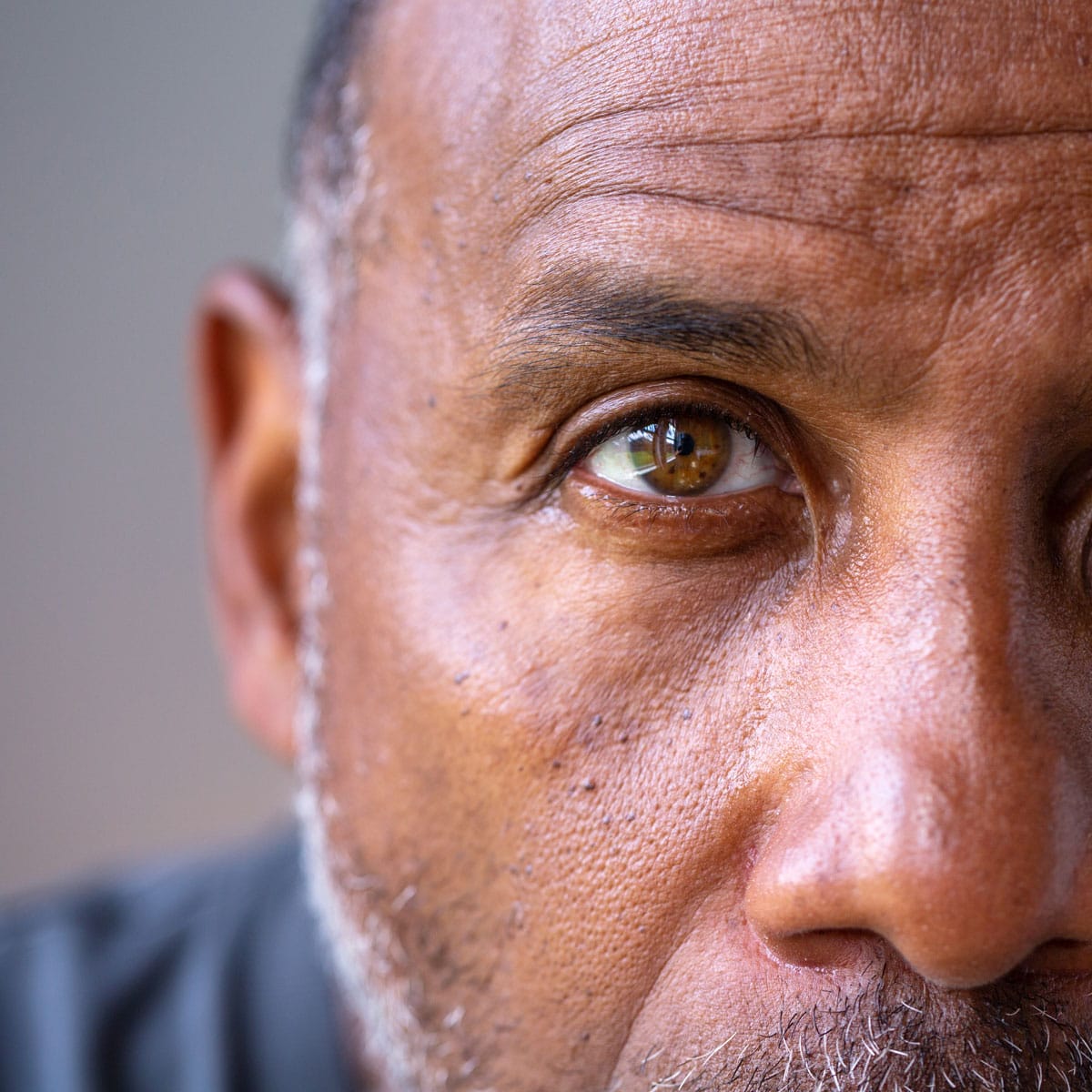
Skin Cancer & Eyelid Reconstruction
Reconstructive surgery
Because of this exposure, skin cancers around the eyes are quite common. And because the eyes are such a distinguishing feature of a person’s face, even then most subtle asymmetry or contour abnormality caused by cancer removal surgery can be conspicuous. Removing skin cancers in the eyelids AND achieving a natural, symmetrical look requires a surgical specialist in cancer removal and eyelid reconstruction.
Dr. Vickers works with dermatologists and other physicians along the Treasure Coast to treat skin cancers on the eyelids and face. In some cases, a Mohs surgeon will remove the cancer and send the patient to us for reconstruction. More often, however, Dr. Vickers will remove the cancer and have a board certified pathologist check the margins to ensure it is completely removed. Once the cancer has been completely removed, Dr. Vickers proceeds with reconstruction.
frequently asked questions
Take a closer look
Why choose Dr. Vickers if you have Skin Cancer and need Eyelid Reconstruction Surgery?
Many plastic surgeons and dermatologists aren’t comfortable operating in this area of the face because the unique and delicate anatomy of the eyelids.
As the Treasure Coast’s only board-certified ophthalmologist with two years of subspecialty training in oculoplastics, Dr. Vickers is well-trained and experienced in eyelid cancer removal and reconstructive procedures. These surgical procedures can be done in conjunction with a dermatology Mohs surgeon or with an onsite pathologist.
What can I expect during Eyelid Reconstruction Surgery?
The duration of surgery and recovery depends on the size of the defect once the skin cancer has been removed and all margins are clear.
Dr. Vickers will review expectations during your examination and make sure you are comfortable before, during and after the procedure.
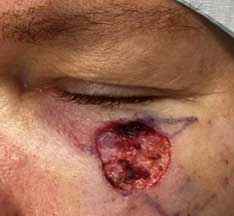
Before
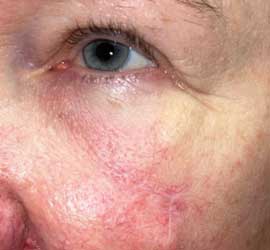
After
